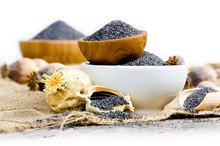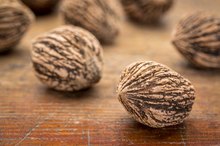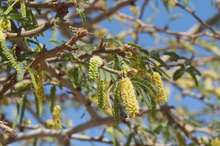Cedar Leaf Oil Toxicity
Cedar leaf oil, or CLO, comes from a genus of trees known as Thuja, which includes coniferous cedar trees. The name comes from the Greek word “thuo” which means “to sacrifice.” The wood was burned as part of sacrifices to the gods. Native Americans still use its smoke to lift prayers to God. CLO contains a potent neurotoxic substance called thujone. No studies currently document safe and effective uses of cedar leaf oil, and its medical use is not recommended.
Chemical Constituents
The volatile oil produced by cedar leaves and twigs contains about 65 percent thujone, which is a hydrocarbon and a toxic chemical. Borneol, finchone, picine, camphor, limonene, tannin, myrcin and thujin are also found in CLO.
Purported Uses
Eucalyptus Oil Side Effects
Learn More
Cedar leaf oil has been used for thousands of years as an herbal remedy. It has been used as an abortifacient, an emmenagogue, a diuretic and a remedy for stomach disorders. It is sometimes applied externally to relieve the pain of arthritis and is used as a vermifuge against parasites. Applied topically, cedar leaf oil has been used to treat fungus, thrush and eczema on the skin 2. It has been used against viruses and tumors. Rich in vitamin C, the leaves have been used for scurvy, and an extract has been used for treating influenza Type A. Thuja is also popular as a homeopathic preparation.
Despite CLO’s long use in herbal medicine, well designed studies on the effectiveness of this herb are all but non-existent. Cedar leaf oil is not recognized as safe and effective for any medical use and has serious side effects and toxicities.
- Cedar leaf oil has been used for thousands of years as an herbal remedy.
- Rich in vitamin C, the leaves have been used for scurvy, and an extract has been used for treating influenza Type A. Thuja is also popular as a homeopathic preparation.
Side Effects
Cedar leaf oil may cause contractions of the uterus, producing spontaneous abortion 2. Asthma attacks, gastrointestinal irritation, nervous system stimulation, spasms, seizures, hallucinations and damage to the liver and kidneys may occur with cedar leaf oil use 2.
Allergies
Peppermint Oil Vs. Peppermint Extract
Learn More
Persons with allergies to cedar pollen should avoid using CLO. Exposure can cause itching, swelling, or redness of the skin. Difficulty or pain in breathing, chest tightness, and swelling of the mouth, lips, face and throat are possible with thujone allergies. Seek medical help immediately if you experience such symptoms.
- Persons with allergies to cedar pollen should avoid using CLO.
- Difficulty or pain in breathing, chest tightness, and swelling of the mouth, lips, face and throat are possible with thujone allergies.
Toxicities
Thujone is a neurotoxin found in absinthe, some furniture polishes, in CLO oil, and in some homeopathic preparations. Symptoms of thujone poisoning can include difficulty breathing, throat swelling, burning in the eyes, ears, lips, nose, throat, or lungs, esophageal burns, abdominal pain, vomiting--sometimes bloody--circulatory collapse, low blood pressure, loss of vision, seizures, stupor, coma, skin burning or irritation.
If you suspect thujone poisoning, do not induce vomiting. Seek medical help immediately. Call 911 and ask for the poison control center for further instructions.
- Thujone is a neurotoxin found in absinthe, some furniture polishes, in CLO oil, and in some homeopathic preparations.
- If you suspect thujone poisoning, do not induce vomiting.
Precautions
Pregnant or nursing women should not use CLO due to the possibility of spontaneous abortion. CLO should be kept out of the reach of children and not used in this population because of its toxicity.
Persons with gastrointestinal ulcers or other conditions should avoid cedar leaf oil, as should those with seizure disorders.
Currently, there are no medically recognized uses for cedar leaf oil 2. Its use is not recommended.
- Pregnant or nursing women should not use CLO due to the possibility of spontaneous abortion.
- CLO should be kept out of the reach of children and not used in this population because of its toxicity.
Related Articles
References
- American Cancer Society: Thuja
- The New York Times Health Guide: Cedar Leaf Oil
- PDQ Integrative, Alternative, and Complementary Therapies Editorial Board. Aromatherapy With Essential Oils (PDQ®): Health Professional Version. 2019 Oct 25. In: PDQ Cancer Information Summaries. Bethesda (MD): National Cancer Institute (US); 2002-.
- Rajmohan V, Mohandas E. The limbic system. Indian J Psychiatry. 2007;49(2):132-9. doi:10.4103/0019-5545.33264
- PDQ Integrative, Alternative, and Complementary Therapies Editorial Board. Aromatherapy With Essential Oils (PDQ®): Health Professional Version. 2019 Oct 25. In: PDQ Cancer Information Summaries [Internet]. Bethesda (MD): National Cancer Institute (US); 2002-.
- Sánchez-vidaña DI, Ngai SP, He W, Chow JK, Lau BW, Tsang HW. The Effectiveness of Aromatherapy for Depressive Symptoms: A Systematic Review. Evid Based Complement Alternat Med. 2017;2017:5869315. doi:10.1155/2017/5869315
- Hay IC, Jamieson M, Ormerod AD. Randomized trial of aromatherapy. Successful treatment for alopecia areata. Arch Dermatol. 1998;134(11):1349-52. doi:10.1001/archderm.134.11.1349
- Barnard DR. Repellency of essential oils to mosquitoes (Diptera: Culicidae). J Med Entomol. 1999;36(5):625-9. doi:10.1093/jmedent/36.5.625
- Takeda A, Watanuki E, Koyama S. Effects of Inhalation Aromatherapy on Symptoms of Sleep Disturbance in the Elderly with Dementia. Evid Based Complement Alternat Med. 2017;2017:1902807. doi:10.1155/2017/1902807
- Orchard A, Van vuuren S. Commercial Essential Oils as Potential Antimicrobials to Treat Skin Diseases. Evid Based Complement Alternat Med. 2017;2017:4517971. doi:10.1155/2017/4517971
- Barnard DR. "Repellency of essential oils to mosquitoes (Diptera: Culicidae)." J Med Entomol. 1999 Sep;36(5):625-9.
- Hay IC, Jamieson M, Ormerod AD. "Randomized trial of aromatherapy. Successful treatment for alopecia areata." Arch Dermatol. 1998 Nov;134(11):1349-52.
Writer Bio
Penny Kendall is a writer with more than 25 years of experience writing in health care and public policy. She has a Bachelor's Degree in English from the University of Texas and a Diploma in nursing from Brackenridge Hospital School of Nursing. Her experience includes advocacy for persons with disabilities.








